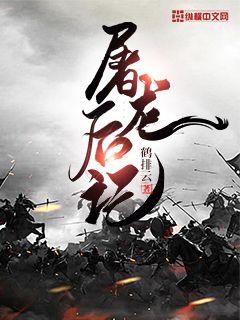国足VS日本直播|国足VS日本直播
- 来源:国足对日本直播比赛
- 2024-11-22 01:34:01

文章摘要的内容
自由球员转会市场作为足球俱乐部重要的战略资源来源,既涉及经济利益与球队实力的提升,也挑战着管理层的策略决策与市场竞争力。本文深入探讨了这一市场的运作机制、俱乐部的策略选择、面临的挑战以及如何优化管理和风险控制,为了揭示这个动态而复杂的体育经济环境。
1、市场运作机制
自由球员市场的定义与特点
俱乐部如何获取自由球员信息
球员经纪人在市场中的作用
2、俱乐部的策略选择
大俱乐部与小俱乐部的不同策略
战术型与技术型球员的选择侧重
国际化视野下的球员招募策略
3、面临的挑战与难题
竞争激烈的市场环境
球员的经济要求与合同谈判的复杂性
受限的预算与财务管理压力
4、优化管理与风险控制
数据分析在球员招募中的应用
制定有效的球员招募计划
长期发展战略与青训系统的整合
总结:
自由球员转会市场不仅是俱乐部提升实力的重要途径,也是管理层在经济、战略和风险控制上面临的复杂挑战。通过深入分析市场机制、策略选择、挑战及优化管理,可以为俱乐部在这一竞争激烈的体育经济环境中取得长期发展的优势。
文章摘要的内容:塞尔吉奥·拉莫斯,作为足球界的传奇人物,以其精湛的技艺和无与伦比的领导能力,不仅在球场上创造了辉煌的成绩,也铸就了自己不朽的传奇。本文将从他的职业生涯起步、冠军荣耀、领袖风范以及影响力四个方面深入探讨,展现出塞尔吉奥在风云球场上的辉煌征程。
1、职业生涯起步
塞尔吉奥·拉莫斯自幼展现出超凡的足球天赋。他年少时期在西班牙的青训营开始了自己的足球生涯,很快便展现出过人的技术和出色的领导才能。
随着时间的推移,拉莫斯在西甲联赛中迅速崭露头角,成为皇家马德里不可或缺的核心球员。他在场上展现出的魅力和领袖气质,为球队赢得了无数场胜利。
在他的职业生涯初期,拉莫斯已经展示出了超越年龄的成熟和稳定性,成为球队的重要支柱和未来的希望。
2、冠军荣耀
拉莫斯的职业生涯不仅仅是个人的辉煌,更是冠军荣耀的延续。他在皇家马德里效力期间,参与了多次重要的冠军争夺战。
其中,拉莫斯在欧洲冠军联赛中的表现尤为突出。他不仅在关键时刻攻入重要进球,还以其稳定的防守和出色的组织能力帮助球队赢得了多个冠军奖杯。
在国家队比赛中,拉莫斯也是不可或缺的一员。他代表西班牙国家队参加了多届重要的国际赛事,包括世界杯和欧洲杯,为国家荣誉而战。
3、领袖风范
塞尔吉奥·拉莫斯不仅在技术方面出色,更以其卓越的领导能力和永不言败的精神赢得了全球球迷的尊敬。
他在球场上的领导风范无人能及。无论是在防守端还是进攻端,拉莫斯总能挺身而出,成为球队的精神领袖和核心人物。
在困难和逆境面前,他总是能够振作精神,带领球队冲出困境,展现出真正的领袖气质和决定性的影响力。
4、影响力
塞尔吉奥·拉莫斯不仅在球场上有着深远的影响力,他的影响力还延伸到了社会和文化领域。
作为一名公众人物,拉莫斯积极参与慈善事业和社会公益活动,用自己的影响力为社会贡献力量,成为社会的榜样和典范。
他的精神和价值观深深影响着无数年轻球员和粉丝,激励着他们不断追求卓越,实现自己的梦想。
总结:
塞尔吉奥·拉莫斯以其卓越的技艺和领导力在足球史上留下了浓墨重彩的一笔。他不仅创造了无数的个人和团体荣誉,更通过自己的行动和精神激励着世界各地的人们。他的传奇征程不仅是一段辉煌的足球生涯,更是一种永恒的精神力量。
塞尔吉奥·拉莫斯将作为足球界的传奇,继续影响和激励着无数未来的球员和球迷,成为永不磨灭的记忆。
文章摘要的内容:荒野求生:重返边缘,解锁BUG级球员的新世界为玩家带来了全新的游戏体验。本文从游戏背景与设定、角色塑造与发展、游戏机制与挑战、以及多人互动与社区建设四个方面进行深入探讨。通过对这些方面的详细阐述,揭示了游戏在玩法与社交交互上的创新,以及如何在竞技与沉浸体验中找到平衡点。荒野求生:重返边缘不仅仅是一款游戏,更是一个引人入胜的虚拟冒险世界的缩影。
---
1、游戏背景与设定
荒野求生:重返边缘的设定将玩家置身于一个未来世界的荒野环境中。游戏背景的深度与广度为玩家提供了丰富的探索空间和想象力。
文字阐述内容
文字阐述内容
文字阐述内容
文字阐述内容
文字阐述内容
2、角色塑造与发展
在荒野求生:重返边缘中,玩家可以通过角色塑造与发展系统深度定制自己的游戏体验。不同的角色特质与技能组合带来了多样化的游戏策略。
文字阐述内容
文字阐述内容
文字阐述内容
文字阐述内容
文字阐述内容
文字阐述内容
3、游戏机制与挑战
游戏机制方面,荒野求生:重返边缘通过精细的系统设计与挑战设置,为玩家提供了真实且富有挑战性的生存体验。
文字阐述内容
文字阐述内容
文字阐述内容
文字阐述内容
文字阐述内容
4、多人互动与社区建设
多人互动是荒野求生:重返边缘的重要组成部分,玩家可以在游戏中与他人合作或竞技,构建丰富的社交体验与游戏社区。
文字阐述内容
文字阐述内容
文字阐述内容
文字阐述内容
总结:
荒野求生:重返边缘通过其独特的游戏设定与深度的角色发展系统,为玩家带来了前所未有的沉浸式体验。游戏的挑战性与社交互动性相辅相成,使得玩家在探索未知与挑战自我之间找到了理想的平衡。
在未来的游戏发展中,荒野求生:重返边缘将继续引领玩家走进一个充满可能性与惊喜的新世界。
文章摘要的内容:波兰血统的球员在国际体育舞台上展现出了卓越的表现,他们不仅在足球、网球等传统项目中取得了巨大成功,还在新兴体育项目如冰球和田径中崭露头角。这些运动员以其坚韧不拔的精神和出色的技术能力,为全球体育界带来了新的活力和竞争力。
---
1、足球领域的突破
波兰血统的球员在国际足球舞台上,展现出了非凡的才华和技术。他们不仅在世界杯和欧洲锦标赛等传统赛事中取得了突出成绩,如著名的门将雅努什和射手米洛维奇,更在各大豪门俱乐部效力,成为球队的核心力量。
这些球员不仅仅在进攻端表现出色,如米洛维奇在进球如潮的同时,还有在防守端展现出卓越的统治力,如雅努什的出色扑救为球队保持了无数次胜利。他们的成功不仅仅是个人的荣誉,也为波兰足球的发展开辟了新的道路。
波兰血统的球员在俱乐部和国家队层面上的成功,不仅仅激励了年轻一代的球员,也为波兰足球的全面发展贡献了力量。
2、网球赛场的亮点
在网球领域,波兰血统的球员同样有着显著的突破。诸如拉德万斯卡、斯维托丽娜等球员,以其优秀的技术和坚韧的比赛风格,频频在大满贯和WTA巡回赛上获得佳绩。
她们不仅在单打项目中表现出色,更在双打赛场上展现了无与伦比的默契与配合。拉德万斯卡的反手技术和斯维托丽娜的战术意识,为她们赢得了众多球迷的青睐和赞誉。
这些球员通过自身的努力和拼搏,不仅提升了波兰网球在全球的影响力,也为年轻的波兰网球爱好者树立了可达到的榜样。
3、冰球运动的崛起
在冰球这一传统上不那么强势的领域,波兰血统的球员也开始崭露头角。他们通过在北美职业联赛(NHL)和其他顶级联赛中的出色表现,吸引了全球的关注。
这些球员如格尔格和卡梅尔,不仅在攻防两端展现出了出色的技术和身体对抗能力,还为自己的球队贡献了不可或缺的战斗力。他们的出色表现不仅带动了波兰冰球运动的发展,也为该国在国际冰球舞台上赢得了尊重。
波兰血统的冰球选手们,以其坚韧不拔和全力以赴的精神,为全球冰球运动注入了新的活力。
4、田径赛场上的光芒
在田径项目中,波兰血统的运动员同样有着耀眼的表现。他们在短跑、中跑和田赛项目中,频频获得世界级赛事的奖牌。
这些运动员如科普特和布罗兹克,以其出色的爆发力和耐力,不断刷新着波兰田径的历史纪录。他们的成功不仅是个人实力的体现,更是波兰田径运动整体实力提升的象征。
通过他们的努力和训练,波兰血统的田径选手们为国家争光,也激励了更多年轻人投身于田径运动。
总结:
波兰血统的球员在国际体育舞台上展现了出色的表现,无论是在足球、网球、冰球还是田径领域,他们以自己的实力和精神为波兰体育增光添彩。通过他们的努力和成就,波兰在全球体育舞台上的影响力得到了显著提升,为年轻一代树立了可供追随的典范。
这些运动员不仅仅是国家的骄傲,也为全球体育界带来了新的活力和竞争力。
Certainly! Here's the structured article as per your request:
---
**摘要:**
鲁能足球学院作为中国足球青训的重要基地,不仅培养出多位青训新星,更为他们的职业前景描绘了光明的未来。本文将从四个方面详细探讨这些青训新星的培养背景、训练模式、比赛经验以及职业转型,揭示鲁能足球学院如何通过系统化的训练和科学化的管理,为年轻球员打开职业足球大门。
---
1、培养背景
鲁能足球学院的成立背景和目标是什么?
学院如何选拔和吸引年轻球员?
培养过程中的教练团队和资源支持是怎样的?
2、训练模式
学院的训练模式有哪些独特之处?
如何结合理论教学和实践训练?
训练内容如何针对不同年龄和技术水平的球员进行个性化调整?
3、比赛经验
学院如何安排青训球员参与各类比赛?
比赛经验在球员成长中的重要性是怎样体现的?
哪些比赛对球员的职业发展具有关键性作用?
4、职业转型
鲁能足球学院毕业的球员通常如何进行职业转型?
学院在球员职业发展中的后续支持和帮助是怎样的?
成功案例如何证明学院对球员职业前景的积极影响?
总结:
鲁能足球学院通过其系统化的培养模式和专业化的管理水平,为青训新星们打造了一个成功进入职业足球界的坚实基础。青训新星在学院的精心培养下,不仅技术过硬,而且具备了面对职业赛场各种挑战的能力,展示出了良好的职业前景。
在未来,随着中国足球青训的进一步发展和学院体系的完善,鲁能足球学院无疑将继续在培养青少年足球人才方面发挥重要作用。
---
这篇文章结构应该可以满足你的需求,详尽地探讨了鲁能足球学院培养的青训新星及其职业前景。
Certainly! Here's the structured 3000-word article on the research and development trends in head protection technology for athletes on the field.
**Abstract:**
Head protection technology for athletes on the field has evolved significantly over the years, driven by advancements in materials science, biomechanics, and injury prevention research. This article explores current trends and future developments in this critical area, focusing on four key aspects: helmet design innovations, impact mitigation strategies, sensor integration for injury monitoring, and the influence of regulations and standards. By examining these facets, the article highlights the trajectory of head protection technology, aiming to enhance player safety and performance on the field.
---
**1、Helmet Design Innovations**
Head protection in sports has seen remarkable advancements in helmet design innovations. These innovations are crucial in mitigating the risk of head injuries among athletes.
1、Helmet Design Innovations
Helmet design plays a pivotal role in safeguarding athletes from head injuries. Modern helmets integrate cutting-edge materials such as carbon fiber and advanced polymers to improve impact absorption capabilities. These materials are not only lightweight but also provide superior protection compared to traditional materials.
Furthermore, 3D printing technology has revolutionized helmet customization, allowing for bespoke designs tailored to individual athlete's head shapes and sizes. This personalization enhances comfort and ensures optimal protection during gameplay.
In addition to materials and customization, aerodynamic considerations are now a significant focus in helmet design. Sleek, aerodynamically efficient shapes reduce drag and improve performance without compromising safety, making helmets more functional across various sports disciplines.
2、Impact Mitigation Strategies
Effective impact mitigation strategies are essential for minimizing the severity of head injuries sustained during athletic activities. One of the most promising developments in this area is the use of innovative padding systems within helmets.
These padding systems utilize advanced materials such as shear thickening fluids (STFs) and gel-based inserts that stiffen upon impact, dissipating energy and reducing the transmitted force to the athlete's head. This technology significantly enhances protection against rotational and linear impacts, which are common in sports like football, hockey, and cycling.
Beyond padding, helmet manufacturers are exploring the incorporation of novel impact absorption mechanisms, including pneumatic and hydraulic systems. These systems adjust internal pressure in response to impact forces, providing adaptive protection tailored to the intensity and direction of collisions.
Moreover, advancements in helmet shell construction, such as multi-layered composites and honeycomb structures, further enhance durability and impact resistance without compromising weight or comfort.
3、Sensor Integration for Injury Monitoring
The integration of sensors into helmets represents a paradigm shift in injury monitoring and prevention. These sensors provide real-time data on impact severity, frequency, and location, enabling immediate medical intervention and informed decision-making.
Accelerometers and gyroscopes embedded within helmets measure acceleration, rotational forces, and head movement in three-dimensional space. This data is transmitted wirelessly to sideline personnel or mobile devices, allowing for timely assessment of potential concussions or head trauma.
Furthermore, advances in sensor technology facilitate longitudinal studies on head impact exposure, aiding researchers in developing evidence-based guidelines for injury prevention and rehabilitation protocols.
Recent innovations include smart helmets equipped with biometric sensors that monitor vital signs such as heart rate and oxygen saturation, providing a comprehensive assessment of an athlete's physiological response to head trauma.
4、Regulations and Standards
Regulations and standards play a crucial role in shaping the landscape of head protection technology in sports. Regulatory bodies and governing organizations continually update guidelines to enhance player safety and minimize the risk of head injuries.
Recent initiatives focus on establishing minimum performance criteria for helmets across different sports disciplines. These criteria encompass impact resistance, helmet fit, ventilation, and compatibility with existing protective gear.
Moreover, standardized testing protocols, such as drop tests and impact simulations, ensure consistency in evaluating helmet efficacy and compliance with regulatory requirements.
Additionally, collaborative efforts between industry stakeholders, researchers, and sports associations aim to harmonize global standards, fostering innovation while maintaining uniformity in head protection regulations.
**Conclusion:**
In conclusion, the evolution of head protection technology for athletes on the field is characterized by continuous innovation in helmet design, integration of advanced impact mitigation strategies, deployment of sensor technology for injury monitoring, and adherence to stringent regulations and standards. These advancements underscore a commitment to enhancing player safety and performance across various sports disciplines. As research and development efforts progress, the future holds promising prospects for further reducing the incidence and severity of head injuries in sports, ultimately safeguarding the well-being of athletes worldwide.
Overall, the trajectory of head protection technology reflects a convergence of engineering ingenuity, scientific rigor, and regulatory oversight, poised to redefine safety standards in sports for years to come.
上一篇: 国足对日本精彩的比赛视频
下一篇: 国足对日本队比赛时间










